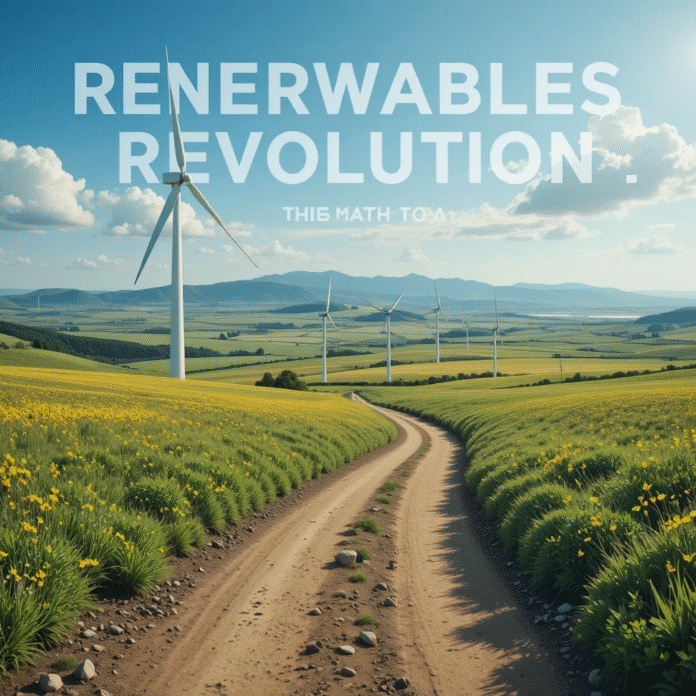Understanding the Current Emissions Gap
The latest emissions gap report published by the United Nations Environment Programme (UNEP) highlights a significant divergence between current greenhouse gas emissions trajectories and the levels required to meet international climate targets. According to the report, the global community is currently on a path that could see temperatures rise by approximately 2.5 degrees Celsius above pre-industrial levels by the end of the century. This alarming projection underscores the imperative to take decisive action to close this gap.
At the heart of this issue is the implementation of nationally determined contributions (NDCs) put forth by countries under the Paris Agreement. The current commitments appear insufficient, as they do not reflect the immediate and drastic measures needed to curb emissions effectively. To align with the goal of limiting global warming to 1.5 degrees Celsius, there must be a substantial ramp-up in the ambition and execution of these NDCs by the year 2035. Each nation has a vital role to play in this collective effort to mitigate climate change.
The report emphasizes that a failure to enhance ambition could lead to a concerning overshoot of the established temperature limits, prompting more severe and irreversible impacts on the planet’s ecosystems and human societies. The implications of such a scenario are dire, including increased frequency of extreme weather events, rising sea levels, and threats to food and water security. Hence, closing the emissions gap is not merely a target; it is a necessity to ensure a sustainable future for generations to come.
Ultimately, the findings of the UNEP report serve as both a wake-up call and a framework. They outline the crucial steps that must be taken globally to achieve climate objectives and establish a sustainable future. Enhanced global cooperation and commitment will be essential in making significant strides towards sustainability and climate resilience.
The Role of Renewable Energy in Mitigating Climate Change
The global energy landscape is undergoing a significant transformation as renewable energy sources emerge as pivotal tools in addressing climate change. With the increasing severity of climate-related impacts, the shift towards clean energy technologies has never been more urgent. Renewable energy, derived from natural processes that are constantly replenished, such as solar, wind, and hydropower, presents a sustainable alternative to fossil fuels, which are a major contributor to greenhouse gas emissions.
One of the most notable aspects of the renewable energy revolution is the substantial decline in costs associated with its development and implementation. Over the past decade, prices for solar panels and wind turbines have plummeted, making these technologies more accessible to consumers and businesses alike. This cost reduction has been accompanied by a remarkable increase in investments in renewable infrastructure. Governments and private stakeholders are recognizing the long-term benefits of transitioning to clean energy sources, leading to a surge in projects that aim to harness the power of the sun, wind, and water.
Innovation is a critical driver of this transition, with rapid advancements in technology enhancing the efficiency and effectiveness of renewable energy systems. Enhanced energy storage solutions and smart grid technologies are enabling better integration of renewables into existing energy systems, creating opportunities for cleaner energy delivery to consumers. Additionally, the environmental benefits of renewable energy are complemented by its economic advantages, including job creation across various sectors. The growth of the renewable energy industry not only supports climate mitigation efforts but also fosters energy security through reduced reliance on imported fuels.
As we confront the reality of climate change, embracing renewable energy is essential for fostering a sustainable future. The urgency of this transition reflects the pressing need to shift away from fossil fuels and invest in clean power alternatives that promote environmental health and economic resilience.
Challenges Faced by Developing Nations
As the world shifts towards renewable energy sources, developing nations confront a plethora of challenges that hinder their transition. One principal hurdle is the capital costs associated with renewable energy infrastructure, which can be prohibitively high for many of these countries. Unlike developed nations, which generally have access to ample financial resources and investments, developing nations often struggle to secure sufficient funds for the necessary technologies and systems. As a consequence, their efforts to transition to cleaner energy sources such as solar, wind, and hydroelectric power are significantly hampered.
Moreover, the limited investment in renewable energy within developing nations exacerbates the existing challenges. Without robust financial backing, industries and governments in these regions may be slow to adopt cleaner technologies due to concerns over profitability and returns on investment. This creates a paradox where the urgent need for sustainable energy solutions competes with immediate economic considerations, such as job creation and energy security, thus making it difficult to prioritize renewable energy initiatives.
Aside from capital costs, developing countries face the pressing issue of climate vulnerability. The increasing impacts of climate change pose substantial risks to their economies and ecosystems. Thus, there is a pressing need for greater support in adaptation efforts to combat these worsening climate impacts. Enhancing resilience through better infrastructure, effective policies, and community engagement is crucial for protecting vulnerable communities in these nations. In addition, developed nations play a critical role by providing necessary financial support, technology transfer, and capacity-building initiatives to assist developing nations in overcoming these barriers.
Fostering international partnerships and financial mechanisms that prioritize renewable energy investment can pave the way for a more inclusive energy transition, ensuring that developing nations can meaningfully participate in the renewables revolution.
A Call to Action for Global Leaders
As the climate crisis intensifies, the role of global leaders has never been more crucial. An urgent call to action is needed to address the challenges posed by climate change, as well as to harness the vast potential of renewable energy sources. The International Energy Agency has highlighted that in order to meet global climate objectives, the world must aim to triple its renewable energy capacity and double energy efficiency by 2030. This ambitious objective requires commitment and collaboration at all levels of government and industry.
The reform of financial systems is indispensable in this quest. Current financial structures often inhibit the flow of investment toward sustainable projects. Leaders must prioritize the establishment of frameworks that support renewable energy initiatives through low-interest loans, grants, and incentives for private investors. This shift can help drive significant capital into the renewable sector, fostering innovation and accelerated deployment of clean technologies.
Furthermore, effective debt solutions must be implemented for developing nations that face substantial financial challenges. By providing these countries with pathways to sustainable finance, global leaders can empower them to invest in renewable energy projects that not only benefit their local environments but also contribute to global climate stability.
As the world approaches the upcoming COP30 summit, the pressure is mounting for leaders to articulate a bold and credible response to the climate emergency. This crucial event must serve as a turning point for international collaboration, mobilizing necessary resources, and closing existing ambition gaps. The future of the planet hinges on the collective responsibility embraced by every nation. It is imperative that global leaders unite and take decisive actions not just for today, but for the generations to come, ensuring a thriving, sustainable future for all. The time for change is now.

